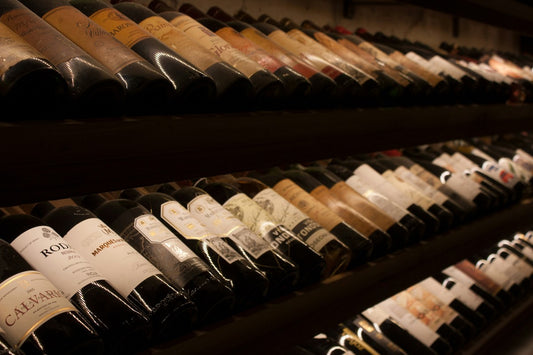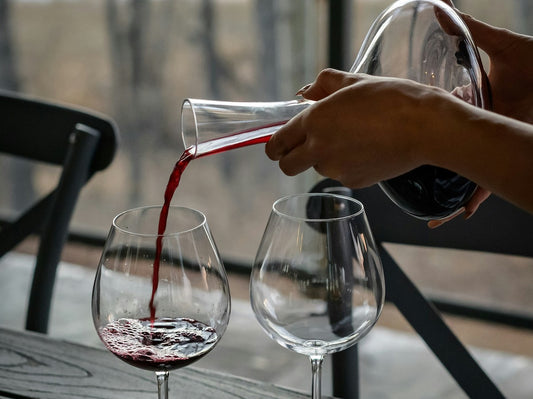Cooking With Beer: Best Types of Beers For Cooking!
Norah Clark
What is the best way to cook with beer? Beer can be used to marinate or tenderize meats, impart flavor to bread, and introduce a distinct taste to desserts. Beer helps keep food moist and aids in bake goods rising, as it contains yeast. While any beer can be used for cooking, choosing the right one for your recipe is crucial.
Beer, one of the oldest alcoholic beverages, remains among the most popular worldwide. Over centuries, and particularly since the advent of modern brewing technology, thousands of beer varieties have emerged.
Consider this guide as your ultimate resource for any information you may need. So, without further ado, here’s a chef’s guide to cooking with beer.
Cooking With Beer: Can Beer Be Used For Cooking?
Each stage of beer production, from initial harvesting to final bottling techniques, influences the flavor and quality. This results in a plethora of textures, flavors, and characteristics, opening up a wide array of applications.
Each beer (not just the category, but also the specific beer and production year) impacts the final taste of the dish it’s paired with.
They can create remarkable sauces and marinades to accompany meals and enhance flavors.
Beers are often used to lighten batters for crispy fish or onion rings and virtually any deep-fried food.
Another popular cooking technique involves placing an open beer can inside a chicken or turkey cavity, allowing the liquid (beer) to evaporate within the cavity, resulting in a delicious and moist roast chicken.
Interestingly, numerous beers are suitable for seafood dishes. Jamaican beers, for example, are perfect for smoky barbecued fish.
Considering adding beer to cake batter? Give it a try!
Beer contains natural yeast, allowing it to act as a flavor enhancer, consistency adjuster, and leavening agent in baked goods and cakes.
Ultimately, beers can produce some of the most delightful bread. Like cakes, they serve as flavor enhancers and leavening agents, giving a unique flavor and texture to various bread types.
The Types Of Beer Good For Cooking With
It’s all about flavor pairing. As with wine, which is often served with food that complements it, beer can be both consumed alongside and incorporated into dishes.
There aren’t necessarily better or worse beers for cooking; consider what you plan to use the beer for (marinades, cakes, bread, etc.) and the desired flavor profile (smoky, sweet, yeasty, spicy, light, etc.).
Ultimately, it’s up to your personal preferences. Experimentation is key to discovering the perfect flavor match.
Here’s a brief example of food and beer pairings to help guide your choices (flavor-wise, at least) when deciding which beer to pair with specific ingredients or dishes.
Remember, not all beers in a category will work well; experiment with different brands.
Use this as a starting point to help guide your decisions.
| Component | Examples of ingredients | Examples of beer types | |
| Grains | Farro Quinoa Arborio rice Wild rice Polenta | American Amber Ale Pilsner |
Protector Organic American Amber Ale Societe The Heiress Pilsner |
| Beans & Legumes | Green beans Butter beans Lentils Chickpeas Fava beans Split peas | Brown Ale Hefeweizen |
Modern Times Black House Coffee Ale Garage Imperial Oatmeal Brown Ale |
| Shellfish | Lobster Shrimp Crab Clams | Saison Hefeweizen |
Allagash Saison Violette Enegren Schoner Tag |
| Rich meats | Lamb Beef loin Beef rib-eye | American Brett Belgian-style Flanders |
Crooked Stave Wild Brett |
| Pork | Virtually any pork cut | Indian Pale Ale Belgian-style Dubbel |
AleSmith for Hope Hazy IPA |
| Poultry | Chicken Turkey | Pale Lager | Black Plague Acid Drop Light Lager |
| Game birds | Duck Guinea fowl Quail | American Pale Ale American Brown Ale |
Cooperage Captain Curt Pale Ale |
| Grilled vegetables | Virtually any grilled vegetable | Dry Stout German-style Schwarzbier |
AleSmith Speedway Stout |
Read also: Best Italian Beers – Most Popular Italian Beer Brands
Does Beer Lose Alcohol When Cooked?
Like any alcohol-based beverage – wine, beer, or liquor – alcohol evaporates during the cooking process.
When stirring beer into hot liquid, such as soup, it immediately loses about 15% of its ABV (alcohol by volume) content.
If you simmer the liquid for around 15 minutes, as in making mulled wine, this percentage could increase to 20%.
In dishes like curries or stews that require an hour of simmering, around 75% of the alcohol will evaporate during that time.
For longer cooking times, like roasts that need around 2.5 hours (2 hours and 30 minutes), most of the alcohol will evaporate, specifically around 95%.
Eliminating all of the alcohol is unlikely. However, you could just cook with non-alcoholic beer since it contains less than 0.5% alcohol to begin with.
Is Cooking With Beer Healthy?
You might be surprised to learn that cooking with beer can actually be healthier!
A typical 12-ounce beer bottle contains about 150 calories. Most beers aren’t high in cholesterol or fat.
They are also very low in sodium (salt) and surprisingly rich in various minerals and vitamins like B-type vitamins, magnesium, selenium, potassium, and phosphorus.
Naturally, excessive alcohol consumption is not beneficial for any part of the body. Overindulgence can lead to digestive system, liver and brain function, heart, and motor issues, according to Self.com.
However, when cooking with beer, the evaporating alcohol reduces calories, making it an excellent way to flavor food and a great alternative to other methods or ingredients.
Another benefit is that when cooking with beer, the vitamins and minerals remain intact and aren’t diluted by alcohol. This means you gain added nutritional value when using beer instead of liquids like broth or water.
Dos And Don’ts When Cooking With Beer
Cooking with beer can be a delightful experience, but there are some rules and guidelines to follow.
Do
- Replace the entire liquid called for in the recipe (stock or water) with beer. Beer adds more flavor and is more nutritious than other recipe liquids.
- Pay attention to the flavors of the dish you’re making and the beer you’re using. Not all beers pair well with every food, just like wine.
- Consider moisture levels. Marinating meat in beer before cooking allows the meat to absorb all the moisture, resulting in a tender and juicy dish.
Don’t
- Refrain from using large amounts of alcohol, even with low alcohol percentages, while cooking. Alcohol’s flavor can overpower the main ingredients and cause odd tastes.
- Alcohol doesn’t fully evaporate when cooking, so ensure your guests can safely consume alcohol and avoid using excessive amounts.
- Steer clear of open flames! Some alcohol will always remain after cooking, so keep food away from them unless you’re adept at handling flames.
- When cooking near an open fire, exercise caution and have fire blankets or extinguishers nearby.
Is It Good To Cook Meat With Beer?
Marinating meat in beer softens the meat and adds a wealth of flavors.
Beer is packed with enzymes that help break down fibrous strands in the meat, essentially tenderizing it. This results in more tender and flavorful meat.
Most recipes using beer help tenderize meat, particularly in longer cooking methods.
Beer also imparts plenty of flavors. The taste and style of the beer you choose will be infused into the marinated meat.
Using beer as a flavoring ingredient during grilling or roasting is an excellent choice. Beer lends a dark, rich color to basting sauces, which are then absorbed by the meat during cooking.
When beer is used as a substitute for water (preventing dilution), it enhances the flavors of the ingredients and meat in a stew. As the alcohol evaporates, the beer’s flavor is left behind to work its magic.
How To Pair Meat And Beer
Incorporating beer in meat dishes is popular, and we have some suggestions and tips to help you choose the right beer for your specific meat dish.
Select Complementary Flavors
For example, light beers (such as pale lagers) pair well with lighter dishes (like a simple chicken sandwich).
If you’re cooking a dish featuring lemon, consider a beer with lemony notes (or similar flavors), like Robinsons’ Trooper Ale (Iron Maiden beer).
Experiment With Contrasting Flavors
While we’ve mentioned matching flavors, if you’re feeling adventurous, try pairing opposite food and drink tastes (that still work well together).
For instance, combine the sweetness of barbecued dishes like barbecue pork ribs with a bitter beer like Sunriver Vicious Mosquito IPA.
Opt For Subtle Flavorings
You can’t go wrong with pairings when you choose lighter beers with understated flavors. These tastes won’t overpower your food or drink in any way.
Duck Foot Logger Export Lager is a great example of a tasty, light-flavored beer.
Cleansing Flavors
When preparing fried, fatty, or spicy dishes, it’s essential to select refreshing beverages like a light, crisp beer. Consider Almanac Vibes Hoppy Pilsner.
| Item | Types of beer | Try this |
| Turkey (roasted) | Dark malts Amber ales |
Ground Breaker Dark Ale Protector Organic American Amber Ale |
| Beefsteak (grilled) | Red ale | Evans Joaquin Dead Mexican Red Ale |
| Porterhouse steak (grilled) | Porters | Left Hand Hard Wired NITRO Coffee Porter Second Chance Tabula Rasa Toasted Porter |
| Rare steak and raw beef (steak tartare) | Stout | Belching Beaver Peanut Butter Milk Stout Black Plaque Medusa Imperial Milk Stout |
| Pulled pork (make sure the base flavor matches the type of beer) | Pale Ales | AleSmith San Diego Pale Ale .394 |
| Pulled pork (for spicy pulled pork dishes) | Honey Ale | Pizza Port California Honey Ale |
| Beef burgers (high-fat content) | Pale Ale | Duck Foot Old Bro Hazy Pale Ale |
| Beef burgers (lean) | Pilsner | Fremont Golden Pilsner |
| Vegetarian burgers (grilled vegetables) | Wheat beers | Maui Pineapple Mana Wheat |
| Chicken Wings (spicy buffalo) | Pale Ales Indian Pale Ales |
Temescal Patio Pale Ale Abnormal Boss Pour IPA |
| Chicken Wings (spiced dry rub) | Brown Ale | Big Sky Moose Drool Brown Ale |
| Chicken Wings (grilled barbeque) | Porters | Barrel Brothers Dark Sarcasm Porter |
| Roast Chicken | Amber Ales German-style Lagers |
Bell’s Amber Ale Enegren Rasenmaher-Bier Lager |
Can You Bake With Beer?
Numerous ways exist to bake with beer, covering both sweet and savory categories. You can create cakes, muffins, pancakes, biscuits, and bread.
Beer serves as a flavoring agent and has other functions. Containing yeast and carbonation, it can act as a leavening agent in certain baked goods, helping them rise during baking.
When baking with beer, keep in mind that baked goods demand precision in measurements and processes.
How To Choose A Beer For Dessert Items
When baking with beer, consider the taste profile of both the product and the beer.
For cakes and desserts, start with porters or stouts. Brewed with roasted malt, they feature cocoa and coffee notes.
The top beers for desserts:
- Porters offer a chocolate-like taste, a less bitter flavor than Stouts, making it perfect for chocolate-based desserts.
- Stouts excel with coffee-flavored dishes due to their bitter, robust coffee taste.
- Brown Ales exhibit nutty and caramel undertones, pairing well with sweet sauces.
- Amber Ale presents complex yet simple flavors, making it an excellent dessert beer.
Tips For Making Desserts With Beer
Use room-temperature, unopened beer. Generally, using room-temperature ingredients for desserts is recommended.
Pour room-temperature beer and let it sit for five minutes before incorporating it into the recipe. This step allows the foam to disperse and excess carbonation to evaporate.
Beer pairs best with full-fat dairy products, not low-fat or fat-free versions. Beer’s acidity could curdle low-fat ingredients.
Desserts made with beer taste best when prepared and consumed fresh. Opened beer’s flavor can change significantly and affect the dessert.
Experiment with various beer flavors and consult a pairing guide to find the best beer for specific desserts.
| Items | Types of beers | Try this |
| New York Cheesecake | Lambic beers | 3 Fonteinen Oude Geuze |
| Tiramisu or Chocolate Chip cookies | Brown Ale | Garage Imperial Oatmeal Brown Ale |
| Ice cream (butterscotch) | Sour beers | Prairie Slush Sour |
| Carrot cake | Indian Pale Ale Imperial Red Ale |
El Segundo Broken Skull IPA |
| Creme Brulee | Belgium-styled Quad Indian Pale Ale |
Urban Roots Where Our Hearts Truly Lie |
| Key Lime Pie | Hefeweizen | Enegren Schoner Tag |
| Lemon Shortbread | Pilsner | Brouwerij West Popfuji Pilsner |
| Orange sorbet | Witbier | Avery Liliko-i Kepolo Passionfruit Witbier |
| Spice cake | Indian Pale Ale | 32 North Nelson IPA |
| Caramel Apple Tart | Brown Ale | Modern Times Black House Coffee Ale |
| Pumpkin flan | Pale Ale | Ground Breaker Inclusion Dry Hopped Pale Ale |
The pairings of these flavors are not fixed in stone. The only method of knowing which flavors go well together is to test your own.
Read also: How Long Does Beer Last In The Fridge? Bottles/Cans of Beer
How To Choose A Beer For Making Bread
Baking bread with beer alone (no yeast or other leavening agents) is possible, and we highly recommend giving it a try.
Selecting the right beer for your desired bread is essential. Experiment with various beer types to achieve your preferred results.
Consider the following when baking bread with beer:
- Stouts, brown ales, and some porters work best for bread (at least flavor-wise).
- Using a beer with a strong taste (too heavy) may result in a bitter loaf, while a mild-tasting beer might not be noticeable.
- When replacing other liquid ingredients in bread recipes (like buttermilk or milk), maintain the fat content for the right texture and flavor.
- Contemplate how to include fat in your recipe through trial and error.
- Allow your beer to reach room temperature for optimal results.
- Like oven-baked desserts, don’t leave the beer open for too long. Maximize carbonation for proper bread rising during baking.
Best Beers For Bread Making
Brown ales, stouts, and porters are the safest choices for bread-making.
Consider the following beers for bread-making:
- Garage Imperial Oatmeal Brown Ale – Barrel Aged
- Belching Beaver La Beaver Mexican Chocolate Peanut Butter Stout
- Clown Shoes Hammer of the Lion Imperial Stout
- Jackie O’s Hell Bettie Imperial Porter
- Pohjala Ohtu American Porter
How Is Beer Made?
While we won’t delve into beer-making intricacies or the various types, we will outline the process to understand how each component affects your food and final taste.
Beer’s four basic ingredients:
- Grains
- Water
- Hops
- Yeast
The primary goal for brewers is to extract sugars from grains and convert them into alcohol and carbon dioxide (CO2) to create beer.
Step 1: Malting
Malting involves germinating grains until they reach around 45% moisture content. Then, they are dried and roasted.
Step 2: Mashing And Lautering
Grains are steeped to activate enzymes in starch, which release sugars. Water is drained, leaving a sweet, syrupy liquid. Lautering removes any remaining grains.
Step 3: Adding Hops
Hops and other spices are added to the liquid for flavor. This step imparts unique aromas and flavors to most beers.
Hops contribute bitterness to the mix—the more hops, the greater the bitterness. Over 150 hop varieties exist, each with a distinct flavor.
Step 4: Fermentation
Before bottling, yeast is added to the mixture to ferment (break down) sugars.
Like different hop types affect the taste, so does the yeast variety used.
Every step, from harvesting to bottling, influences the final appearance, aroma, taste, and mouth feel. All these aspects should be considered when using beer in food.
Like wine pairings, beer pairings are essential for the right flavor combination.
Different Types Of Beer
Beers fall into two main categories: ales and lagers.
Ales
Ales are produced at higher temperatures and can be ready to drink in about three weeks.
Ales include numerous subcategories, such as:
- Porter
- Stout
- Brown Ales
- Amber/Red Ales
- Pale Ales
Lagers
Lagers ferment at lower temperatures than ales and are stored for weeks or months at near-freezing temperatures.
Read also: How Long Does It Take Beer To Freeze?
There are five primary lager types, each with unique characteristics and flavors. No two beers taste identical, making beer selection exciting.
| Park Lager | Amber Lager | Bock | Dark Lager | Speciality Lager |
| American Light Lager | Marzen/Oktoberfest | Traditional Bock | Munich Dunkel | Winter warmers / holiday beers |
| Pilsner | Vienna Lager | Helles Bock | Schwarzbier | Herb & Spice |
| Dortmunder | Rauchbiew | Maibock | Fruit | |
| Munich Helles | Doppelbock | Smoke | ||
| Eisbock |
FAQs
What is cooking with beer called?
Numerous cultures that consume beer feature several recipes incorporating it, ranging from the iconic Irish beef and Guinness stew to beer-battered fish and Belgian waterzooi. Unquestionably, Belgian cuisine elevates cooking with beer to its highest potential, showcasing a whole array of dishes appealingly referred to as cuisine à la bière.










